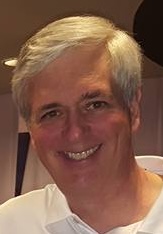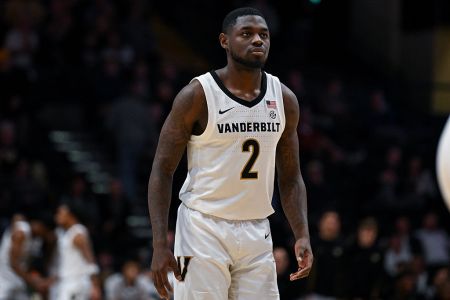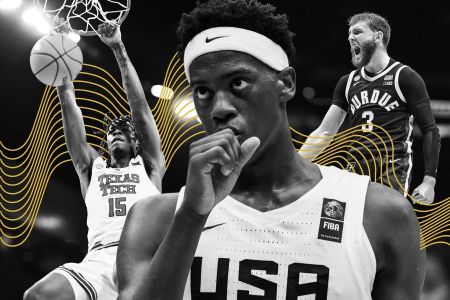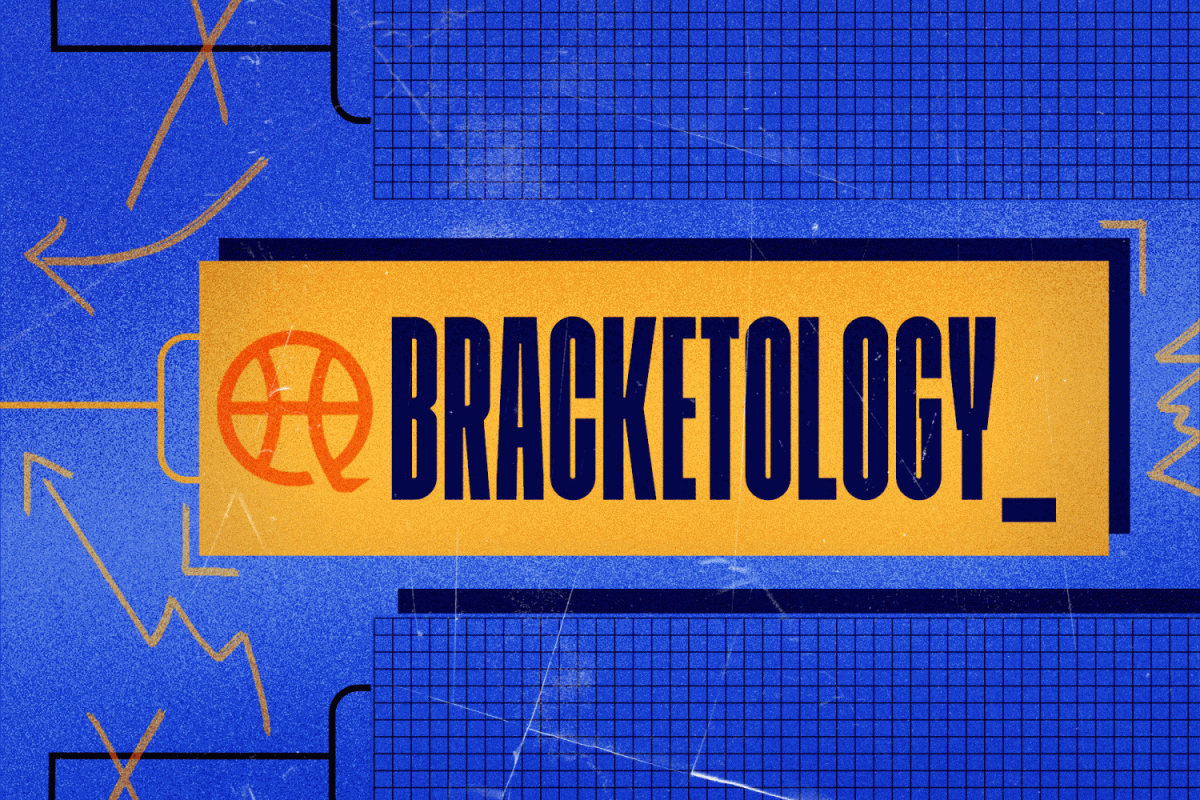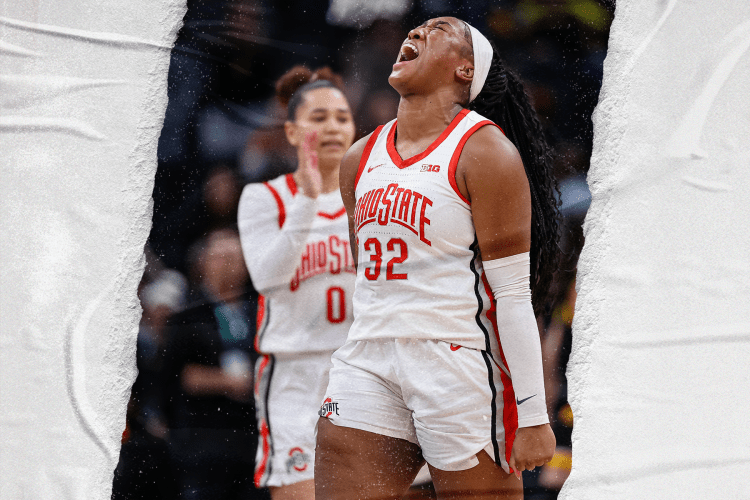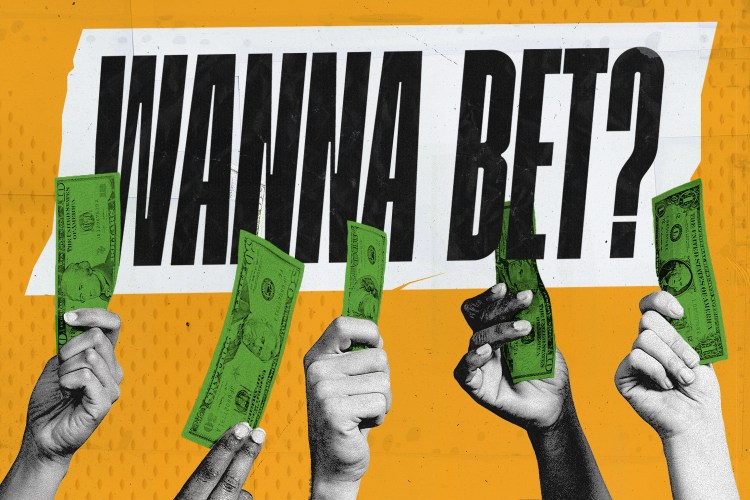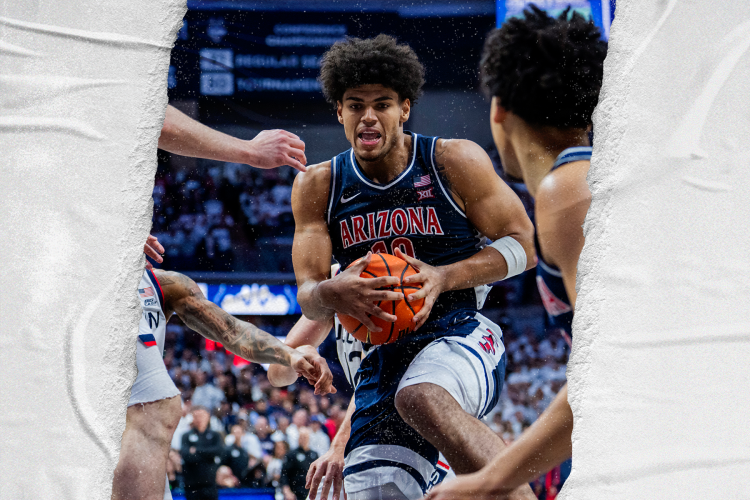Koby Brea worked hard to become the best shooter in the country, but he also grew up with a key home court advantage.
Double rims.
Brea, whose parents were born in the Dominican Republic and later moved to New York, didn’t have the luxury of practicing and playing indoors. He learned the game on the rugged playgrounds in the city, where double rims—one stacked on another—were the norm. That’s because a standard single rim doesn’t hold up to all the hard-core dunking that happens there.
But those industrial strength rims had another advantage, too. Because they were higher than a regulation rim and stiffer than a brick, Brea realized early there was no such thing as a shooter’s bounce. Every shot had to be launched with the perfect arc.
“I did a lot of shooting in the park,” Brea tells Hoops HQ. “Every day, taking hundreds of shots, trying to get the right arc. With a double rim you’ve got to shoot it higher because you can’t shoot it flat. It helps you work on your touch.”
Lexington, Kentucky is about 700 miles from where Brea grew up, but his touch has traveled across the miles and over the years. The 6-foot-7 fifth-year senior has made 56.1 percent of his three-point attempts, second nationally, and he’s a career 44.7% shooter from behind the arc. His touch has helped propel the Wildcats to a 9-1 record and No. 5 ranking heading into Saturday’s annual grudge match with Louisville.
“He’s the best shooter I’ve ever seen,” says Ricardo Greer, the associate head coach at Dayton, where Brea played for four seasons before transferring to Kentucky last spring. “And I’ve been around a lot of players as a coach and in Europe playing professional basketball. A lot of New York players don’t have jump shots because if you weren’t precise and you missed, that ball was bouncing to half court. But he has a weapon. And Koby’s a grinder. He loves to work. He loves the gym. He’s a phenomenal young man.”
Kentucky coach Mark Pope, who made Brea one of his recruiting priorities last spring after taking over for long-time Kentucky coach John Calipari, thinks there’s room for growth in Brea’s game.
“I would like him to grow in that sense about being able to probe more downhill, more confidently, more off-the-wall creating space,” Pope said. “He probably doesn’t manufacture as much as he can yet. He’s such a lethal shooter and teams are going to overplay and overplay and overplay more, and he can really kill teams as a cutter.”
Brea was introduced to basketball at a young age by his father, Stephen, who played professionally in the Dominican Republic. Stephen Brea nurtured his son on the court, but another Stephen – Curry, that is – served as Koby’s inspiration as well. He studied hours of video of Curry as well as some of the best shooters in NBA history.
“I was young and didn’t have the strength to shoot above my head,” Brea says. “I would watch Steph pull it from his hip. But as you progress, going to different levels of the game, you see that doesn’t work for you. So, I began to study Ray Allen, Klay Thompson, JJ Redick and Kyle Korver. I watched everything they did. I learned about balance and footwork, moving without the ball and arc. And I learned it’s all about repetition. At the end of the day, it’s all about the reps.”
Stephen Brea was a fixture on the neighborhood playgrounds, where he mentored young basketball players on the finer points of the game. One of those was Ricardo Greer. The relationship came full circle when Koby was deciding where to play in college and Greer was an assistant at Dayton.
“I’ve known Koby’s father since I was a young boy,” Greer says. “He used to come and take me to the park to play.”
Greer’s familiarity with Koby and his family gave the Flyers the edge when it came to recruiting him. Though Brea’s career there was plagued by illness and injury, he managed to win the Atlantic 10’s Sixth Man of the Year Award two times. Last season, he led the nation in three-point percentage (.498). When he signed with Pope, who was rebuilding the program from scratch after Calipari departure to Arkansas, it was the fulfillment of a life-long dream.
“When I was in high school my coach asked me what school I wanted to go to,” Brea says. “I said the University of Kentucky. He saw it as a long shot, but said we’d try our best. The timing of everything worked out great for me, with coach Pope taking over. He’s the best coach who can coach me at this level.”
Pope’s system allows liberal use of the three and so far, Brea is doing what he’s always done. And just like at Dayton, he’s coming off the bench. That’s okay with him.
“I’ve always tried to do whatever my coach wants,” Brea says. “I understand every team might have different needs. If my role is going to be to come off the bench and bring a spark and impact the game that way, that’s what I’m going to do. I’ve come to realize it doesn’t really matter if you start or come off the bench. I understand what’s needed of me.”
Mark Fox, the former head coach at Nevada, Georgia and Cal, is now an associate coach at Kentucky. Brea sits next to him on the bench and they often discuss the game as it plays out before them. Fox has come to admire Brea not just for his shooting ability, but his attitude.
“The preparation before you release a shot is critically important,” Fox says. “Koby can catch it and pivot off his right foot, left foot, step back. It doesn’t matter. But what’s beautiful about his shot is the way it comes out of his hand. And he’s got great size. If a defender is in his airspace, it doesn’t impact him.
“What’s beautiful about his shot is the way it comes out of his hand. And he’s got great size. If a defender is in his airspace, it doesn’t impact him.”
Mark Fox, Kentucky Associate Coach
“He’s elite and he’s efficient and he’s not one dimensional. He reminds me a little bit of [former Vanderbilt star] John Jenkins as far as the gravity he draws from the defense. People are always pulling his way. He got off to an elite start this year [making 20 of his first 27 3-point shots]. Finding an open shot is the job now. People are just glued to him. Coach Pope is working on different ways to create separation for him.”
It didn’t take opposing teams long to figure out Brea was going to be just as good at Kentucky as he was at Dayton. On Nov. 9, he came off the bench to score 20 points, on 6-of-8 three-point shooting, against Bucknell. Two weeks later he scored 22 and made 5 of 8 threes against Jackson State. On Wednesday night, Brea scored 17 points on 5-of-8 three-point shooting in a win over Colgate.
Given Brea’s shooting ability and positional size, the NBA is a realistic goal. And he considers his role as a reserve to be yet another plus as scouts evaluate his game and just as important, his character.
“[Coming off the bench] has been good preparation for me if I’m blessed to play at the next level,” Brea says. “There aren’t many stars on an NBA team. Every team has that kind of go-to guy and for the rest of the players, they have to play around that. I’m prepared for that. I remember one of my coaches once told me I needed to star in my role. That’s what I’ve always tried to do.”
Greer, who has known Brea since he was barely big enough to hold a basketball, is well aware of the road he’s traveled. He sees a bright future ahead. “I’m 100 percent confident [his skill] translates to the next level, especially because he’s 6-7,” Greer says. “You have a lot of guys in that NBA that shoot at that level, but they’re shorter. Any NBA team would be lucky to have him.”
